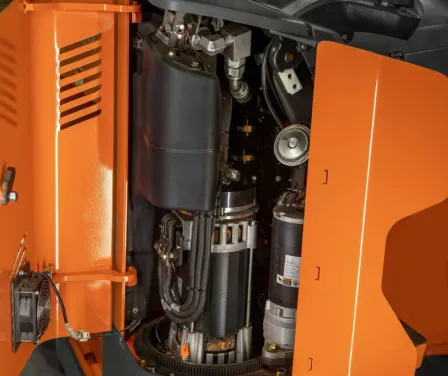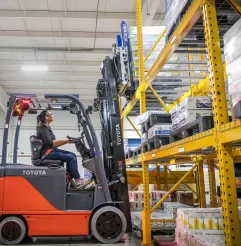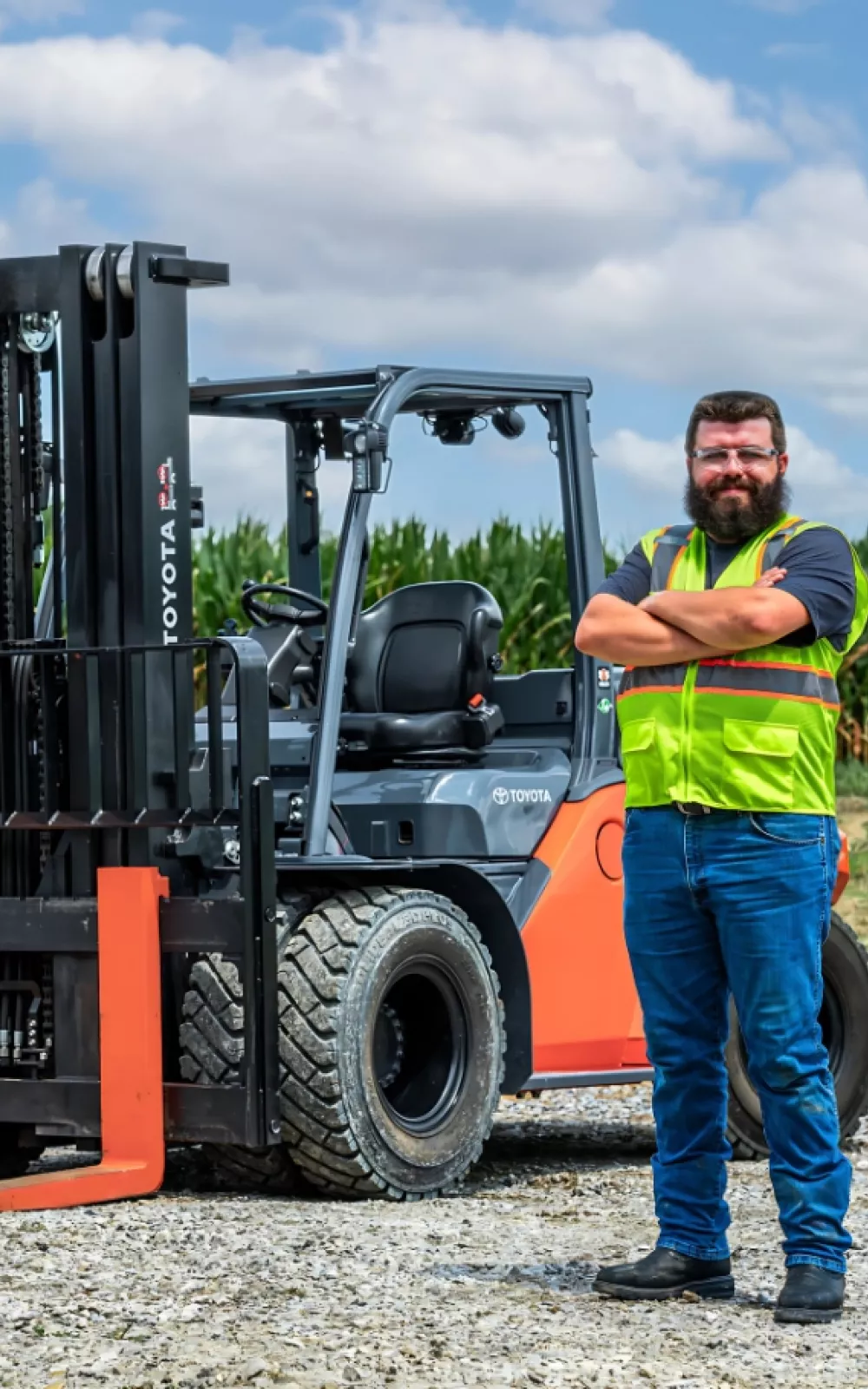Rent
ProLift offers daily, weekly, and monthly rentals. Find the right equipment for maximum productivity and safety.
Let us know how we can assist you! A ProLift specialist will connect with you to help with your material handling needs.

Discover how internal combustion and electric forklifts operate, from their key components to the unique systems that power them. Gain insight into the differences between these two forklift types and how each is designed to meet specific performance needs.

Both internal combustion (IC) and electric forklifts are widely used, and ProLift's team offers expert support for both types of equipment.
An engine converts chemical energy from fuel into mechanical energy, powering the forklift. Engines that operate on this principle are known as internal combustion (IC) engines and are commonly used in IC forklifts.
Since automobiles use similar engines, many people are familiar with their basic operation. However, forklifts utilize four distinct types of IC engines, each designed for specific applications.
Understanding the operation of an IC forklift helps operators and technicians better maintain and troubleshoot the equipment. Below is a clear breakdown of how the internal combustion engine powers the forklift.
An internal combustion (IC) forklift is ideal for applications requiring higher power output and where exhaust emissions are not a concern. It delivers strong torque for handling heavy loads on uneven terrain. IC models perform reliably in all weather conditions, including rain and snow, similar to a car.

Start your search for available equipment and product lines with ProLift’s equipment finder. It helps you quickly identify the best solutions that match your criteria.
An electric forklift motor is a device that converts electro-chemical energy, provided by an industrial battery, into mechanical energy. An electric forklift motor must provide motion for the unit – forward, reverse, up and down – as well as power other items such as hydraulic pumps and electrical components.
The operation of an electric forklift motor is based on the fundamental principles of magnetism, where opposite poles attract and like poles repel. To understand this concept, imagine a bar magnet mounted on a rotating shaft. When another magnet with the same pole is brought near, the like poles repel, causing the shaft-mounted magnet to move away while the opposite pole is drawn toward the approaching magnet. If the polarity is reversed, the motion continues as the magnet is once again repelled, creating continuous rotation.
Instead of relying on physical magnets, an electric forklift motor generates a magnetic field using electrical current supplied by an industrial battery. When wire is wrapped around an iron core and energized, it produces a magnetic field that behaves like a traditional magnet. By continuously reversing the electrical current, the motor creates controlled rotation, converting electrical energy into mechanical movement to power the forklift efficiently.
These processes generate smooth, powerful, and efficient mechanical energy, measured in revolutions per minute (RPM). In a forklift, the motor is directly connected to the drive axle without the need for a transmission or drive shaft. The splined, or grooved, end of the armature engages with the axle’s gear, controlling speed and power based on the electrical current supplied by the accelerator circuit.
Some electric forklift motors are designed to operate with either 36- or 48-volt batteries. A 36-volt battery is sufficient for most standard tasks, but when higher travel and lift speeds are required or when the forklift needs to operate for extended shifts, a 48-volt battery can be used with the same motor to provide additional power and efficiency.
The electric forklift's motor is part of the electrical system, which is managed by either a Silicon Controlled Rectifier (SCR) or Transistor Control. Acting as the "brain" of the forklift, this control system regulates several key functions. It determines the amount of current delivered from the battery to the drive motors through the accelerator circuits, ensuring smooth and efficient operation.
Optional solid-state controls can also manage the current supplied to the hydraulic pump circuits, enabling power steering, lift, tilt, and auxiliary functions. Modern solid-state controls feature built-in diagnostic capabilities, displaying fault codes when issues arise. Additionally, technicians can custom program these controls to adjust the forklift’s performance, optimizing it for operator convenience and specific application needs.
How Can We Help? ProLift service technicians are available for dispatch, supporting you with breakdowns and emergency service. Maintenance agreements are also available.
In the event you are unhappy with the equipment you purchased from ProLift after one year’s use, we will simply buy it back for the original purchase price less two thirds of our normal rental rate.
From equipment and maintenance to replacement parts and safety training, ProLift offers you 360 support. We can also assist you with pallet racking and additional warehouse solutions. Let us know how we can help!

ProLift is a full-service dealer specializing in forklifts and material handling solutions. Tell us how we can help you achieve results at your facility.
ProLift is a full-service dealer specializing in forklifts and material handling solutions. Let us know how we can assist you, and a specialist will be in touch to help.

Let us know how we can assist you! A ProLift specialist will connect with you to help with your material handling needs.
